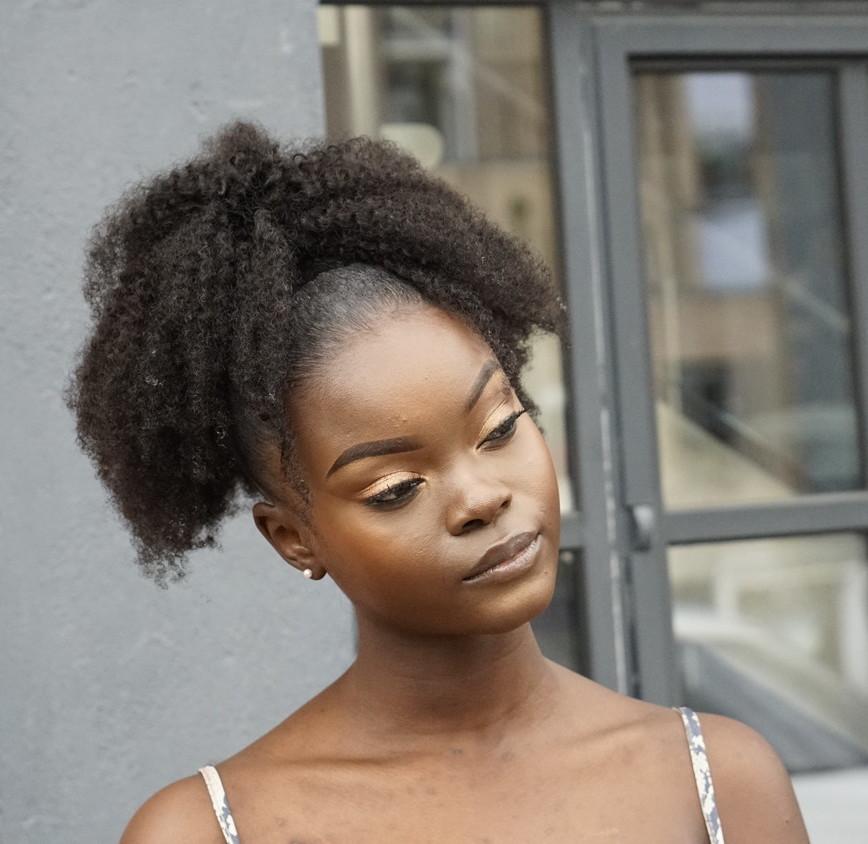Natural hair is beautiful, versatile, and incredibly stylish but let's be honest it can also be a little bit unpredictable, especially when you're catching up on sleep at night. Ever gone to bed with flawless hair only to wake up with frizzy unruly hair the next morning? Yea trust us, we know the feeling.
See the thing is, natural hair requires a nighttime routine to protect it while you sleep and there's a right and wrong way to do it. Up ahead, we're revealing the best techniques to help keep your curls safe at night.
Why Do You Need To Protect Natural Hair At Night?
Natural hair is prone to dryness and tangles that can occur when the hair is exposed to too much friction and manipulation. This issue is even more prevalent while you sleep because most bedding materials are made from cotton which has a slightly rough surface that can pull moisture out of the hair, causing breakage and frizz when your hair rubs across the fabric. This is why having a nighttime routine to protect your curls is extremely important.
When the hair is properly protected, it will reduce the chances of dryness and breakage and instead improve the overall health of your strands. Protecting your hair is also a great way to preserve your hairstyles for longer. If you want your twists outs and wash n’ go's to last for more than a day, you have to protect the hair at night.

Should I Braid My Natural Hair Every Night?
Braiding your natural hair every night can be a great way to keep it protected while you sleep but that can easily get tiring quickly. It may also be too much manipulation on your strands, leaving you at risk of breakage. Instead of braiding your hair daily. Try putting it in loose chunky twists or wrapping it with Bobby pins. If you're looking for low-maintenance natural hair braids, this is a great option for protecting your curls without daily stress.
5 Ways To Protect Your Natural Hair At Night
1. Put It In A Pineapple
The pineapple updo is an amazing way to protect your natural hair at night. This easy style helps keep most of your hair out of the way and prevents your curls from being flattened while you sleep, reducing frizz and dryness. To pineapple your hair, put your hair in a loose ponytail at the crown of your head and secure it with a scrunchie. If your is short, you can divide it into 2-3 sections and create mini pineapples or put it in loose twists that can easily be taken down in the morning.
2. Wear A Satin Bonnet Or Scarf
Covering your hair with a quality bonnet like our satin bonnet is a great way to keep your hair from rubbing against the fabric of your bedding. The satin material has a smooth surface and does not pull moisture from the hair, so it will help prevent dryness and frizz while maintaining your hairstyle. If you do not have a bonnet, you can also use a satin or scarf.

3. Use A Silk Pillowcase
For extra protection, switch out your cotton pillowcase for a silk one. The silk pillowcase will help preserve your curls and prevent dryness. This step is especially important if your bonnets and scarves often fall off while you sleep.
4. Use The Banding Method
If your goal is to maintain your hairstyle while you sleep, then the banding method is one of the best ways to protect your hair at night. This hair-wrapping technique prevents frizz and gives your hair a slight stretch, preventing shrinkage. To do this, simply divide your hair into four sections. Then use a silk scrunchie to tie wrap the hair from roots to ends and cover the hair with a bonnet afterwards.
5. Refresh It With Moisture
The nighttime is a great time to rehydrate your hair, especially if it is starting to feel dry and lacklustre. To avoid waking up with extremely dry hair, apply a little bit of your favourite leave-in conditioner or moisturiser before bed. You can also apply a little bit of hair oil to the ends of your hair to seal in moisture and keep it from getting frizzy and dry.

3 Things To Avoid Before Going To Bed To Protect Natural Hair
1. Wet Hair
Your hair can be extremely fragile and weak when it is wet and when you sleep with wet hair it increases your risk of breakage on your strands. So it is crucial to avoid going to bed with your hair soaking wet. Doing so will also prevent your hair from having an unpleasant smell.
2. Rubber Hair Ties
When tying your hair up at night, avoid using rubber hair ties and scrunchies as they can cause a lot of friction on your strands. They are also usually hard to take off and can leave you with frizzy hair. Opt for silk or satin scrunchies instead.
3. Exposing Your Ends
When protecting your hair, it is important to avoid leaving your ends exposed. This is a very common mistake with people who tie their hair up at night. Your hair may be covered at the roots but if your ends do not get the same level of protection, they will lose moisture, become frizzy and start to develop split ends over time. So, whether you are putting your hair in a bonnet or a pineapple, try to make sure your ends are tucked in.
Protecting your hair at night is key to keeping your natural curls safe from damage and frizz but it does not have to be a hassle. Stick with the steps we discussed in this article and you're sure to wake up to beautiful healthy curls every morning.


